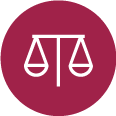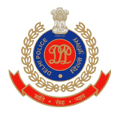The SSC CGL syllabus for Tier 2 is divided into three sections: Paper 1, Paper 2 & Paper 3. In Paper 1, there will be 4 subjects: Quantitative Ability, General Intelligence & Reasoning, General Awareness, and English Language & Comprehension. It is also a computer-based test (CBT) similar to the Tier 1 exam. At this stage, candidates will have to attempt 130 questions in 2 hours and every question carries the weightage of 3 marks. There is a negative marking of one mark for each incorrect answer.
Those who have applied for Junior Statistical Officer (JSO) and Assistant Audit Officer/ Assistant Accounts Officer will be eligible to appear for Paper 2 & 3, respectively. A total of 100 questions will be asked on Statistics and General Studies (Finance & Economics) each that needs to be attempted in 2 hours. The detailed SSC CGL Tier 2 syllabus 2023 for each subject is mentioned in the sections below.
SSC CGL Tier 2 Syllabus 2023: Things To Remember
- Paper-I is compulsory for all the categories of posts.
- Paper-II is only for those candidates who apply for the post of Junior Statistical Officer.
- Paper III is only for those candidates who apply for the post of Assistant Audit Officer or Assistant Account Officer.
SSC CGL Maths Syllabus Tier 2
We have listed all the important topics of the quantitative aptitude section in the SSC CGL Tier 2 syllabus below. The syllabus of SSC CGL Tier 1 and Tier 2 is the same but the difficulty level of SSC CGL Tier 2 is much higher. You will rarely find any question which is formula-based. Check out the SSC CGL Maths syllabus for tier 2 below:
SSC CGL Quant Syllabus | Advance Maths |
Ratio and Proportion | Geometry (Circles, Triangle, Quadrilateral, etc.) |
LCM & HCF | Mensuration (Cube, Cylinder, Sphere, Pyramid, etc.) |
Percentages | Data Interpretation |
Boat & Stream | Trigonometry |
Speed, time, and distance | Height & Distance |
Partnership | Algebra |
CI & SI | Coordinate Geometry |
Pipes & Cistern | Miscellaneous |
Problem on Ages |
Time & Work |
Average |
Mixture & Allegation |
Profit loss & Discount |
Miscellaneous |
SSC CGL Tier 2 Syllabus General Awareness
As you know, General Awareness or General Knowledge is very vast and covering the entire curriculum is quite a task. In order to score well in this section, you must start reading newspapers and do thorough research on the critical events that have happened in history. Also, you must acquaint yourself with all the details of India and its neighboring countries, especially about History, Geography, Culture, Polity and Scientific Research. Moreover, you should be well-versed with General Science, Important days & dates, famous books and authors, schemes launched by the government, etc.
SSC CGL Reasoning Syllabus Tier 2
Through this section, candidates' ability to solve or deal with any issue will be tested. A total of 30 questions will be asked from this section carrying the maximum weightage of 90 marks. Take a look at the topics covered under SSC CGL syllabus for reasoning below.
SSC CGL Syllabus for Reasoning |
Cube & Dice | Similarities and differences |
Blood Relations | Missing Number |
Analogy Questions | Paper-cutting & folding |
Counting of figures | Embedded figures |
Classification | Alphabet Test |
Coding decoding | Figure Series |
Syllogism | Arithmetic number series |
Non-verbal series | Statement conclusion |
SSC CGL English Syllabus Tier 2
In the SSC CGL syllabus for Tier 2, there will be 45 questions in the English section that carry a maximum of 135 marks. Direct & Indirect, Active & Passive topics have a good weightage in the English paper of SSC CGL Tier 2. We have tabulated all the important topics of the English Language section in the Tier 2 SSC CGL syllabus below.
SSC CGL Tier 2 Syllabus Statistics
The knowledge of Statistics is tested through this section of the Tier 2 SSC CGL syllabus. However, candidates must note that only those who applied for the Jr. Statistical Investigator post will have to appear for this exam. The detailed SSC CGL syllabus Tier 2 Statistics is listed below:
- Collection Classification and Presentation of Statistical Data: Primary and Secondary data, Methods of data collection; Tabulation of data; Graphs and charts; Frequency distributions; Diagrammatic presentation of frequency distributions.
- Measures of Central Tendency: Common measures of central tendency – mean median and mode; Partition values- quartiles, deciles, percentiles.
- Measures of Dispersion: Common measures dispersion – range, quartile deviations, mean deviation, and standard deviation; Measures of relative dispersion.
- Moments, Skewness and Kurtosis: Different types of moments and their relationship; the meaning of skewness and kurtosis; different measures of skewness and kurtosis.
- Correlation and Regression: Scatter diagram; simple correlation coefficient; simple regression lines; Spearman‟s rank correlation; Measures of association of attributes; Multiple regression; Multiple and partial correlations (For three variables only).
- Probability Theory: Important topics in the tier 2 SSC CGL syllabus include, Meaning of probability, Different definitions of probability; Conditional probability; Compound probability; Independent events; Bayes‟ theorem.
- Random Variable and Probability Distributions: Random variable; Probability functions; Expectation and Variance of a random variable; Higher moments of a random variable; Binomial, Poisson, Normal and Exponential distributions; Joint distribution of two random variables (discrete).
- Index Numbers: Meaning of Index Numbers, Problems in the construction of index numbers, Types of an index number, Different formulae, Base shifting and splicing of index numbers, Cost of living Index Numbers, Uses of Index Numbers.
- Sampling Theory: Concept of population and sample; Parameter and statistic, Sampling and non-sampling errors; Probability and nonprobability sampling techniques (simple random sampling, stratified sampling, multistage sampling, multiphase sampling, cluster sampling, systematic sampling, purposive sampling, convenience sampling, and quota sampling); Sampling distribution(statement only); Sample size decisions.
- Statistical Inference: Point estimation and interval estimation, properties of a good estimator, Methods of estimation (Moments method, Maximum likelihood method, Least squares method), Testing of hypothesis, Basic concept of testing, Small sample and large sample tests, Tests based on Z, t, Chi-square and F statistic, Confidence intervals.
- Analysis of Variance: Analysis of one-way classified data and two-way classified data.
- Time Series Analysis: Components of time series, Determination of trend components by different methods, Measurement of seasonal variation by different methods.
SSC CGL Syllabus Tier 2 General Studies, Finance, and Economics
The SSC CGL syllabus Tier 2 for Finance and Economics consists of a total of 100 questions carrying 200 marks in total. The main focus of this section is to check the candidate's knowledge of finance and economics. This section is divided into two categories Finance & Accounts and Economics & Governance. Check out the syllabus for SSC CGL Tier 2 for Finance and Economics.
Part A: Finance and Accounts - (80 marks):
- Financial Accounting: Nature and scope, Limitations of Financial Accounting, Basic concepts and Conventions, Generally Accepted Accounting Principles
- Basic concepts of accounting: Single and double entry, Books of Original Entry, Bank Reconciliation, Journal, Ledgers, Trial Balance, Rectification of Errors, Manufacturing, Trading, Profit & Loss Appropriation Accounts, Balance Sheet, Distinction between Capital and Revenue Expenditure, Depreciation Accounting, Valuation of Inventories, Non-profit organizations Accounts, Receipts and Payments, and Income & Expenditure Accounts, Bills of Exchange, Self Balancing Ledgers
Part B: Economics and Governance - (120 marks):
- Comptroller & Auditor General of India: Constitutional provisions, Role, and responsibility, Finance Commission-Role and functions.
- Basic Concept of Economics and Introduction to Microeconomics: Definition, Scope and Nature of Economics, Methods of economic study, Central Problems of an Economy, Production possibilities curve
Theory of Demand and Supply:
- Meaning and determinants of demand, Law of demand and Elasticity of demand, Price, Theory of consumers’ behaviour, Income, and cross elasticity
- Marshallian approach and Indifference curve approach
- Meaning and determinants of supply, Law of supply
- The elasticity of Supply
Theory of Production and cost: Meaning and Factors of production, Laws of production- Law of variable proportions and Laws of returns to scale.
Forms of Market and price determination in different markets: Various forms of markets-Perfect Competition, Monopoly, Monopolistic Competition, Oligopoly, Price determination in these markets.
Indian Economy:
- Nature of the Indian Economy Role of different sectors, Role of Agriculture, Industry and Services-their problems and growth.
- National Income of India-Concepts of national income, Different methods of measuring national income.
- Poverty and unemployment- Absolute and relative poverty, types, causes, and incidence of unemployment.
- Infrastructure-Energy, Transportation, Communication.
- Population-Its size, rate of growth and its implication on economic growth.
Economic Reforms in India: Economic reforms since 1991, Liberalisation, Privatisation, Globalisation, Disinvestment
Money and Banking: Monetary/ Fiscal policy- Role and functions of Reserve Bank of India; functions of commercial Banks/RRB/Payment Banks, Budget and Fiscal deficits and Balance of payments, Fiscal Responsibility and Budget Management Act, 2003.
Role of Information Technology in Governance.





